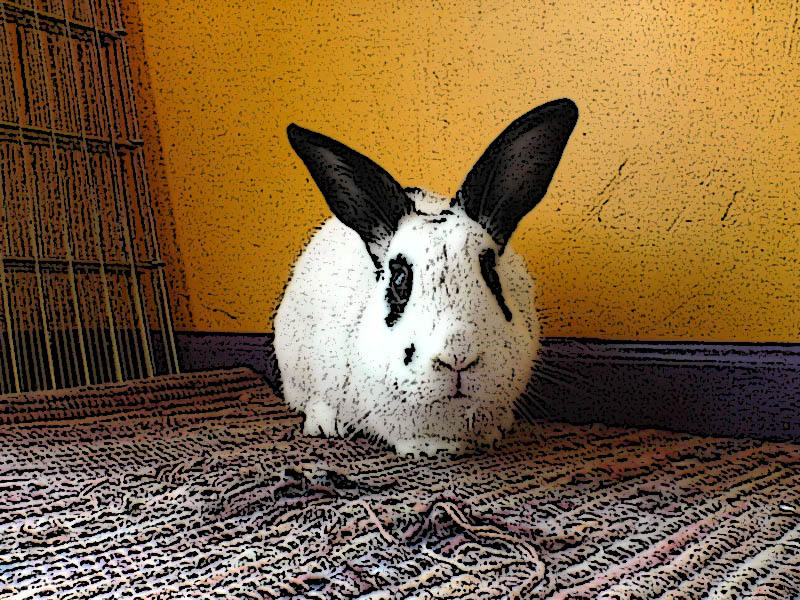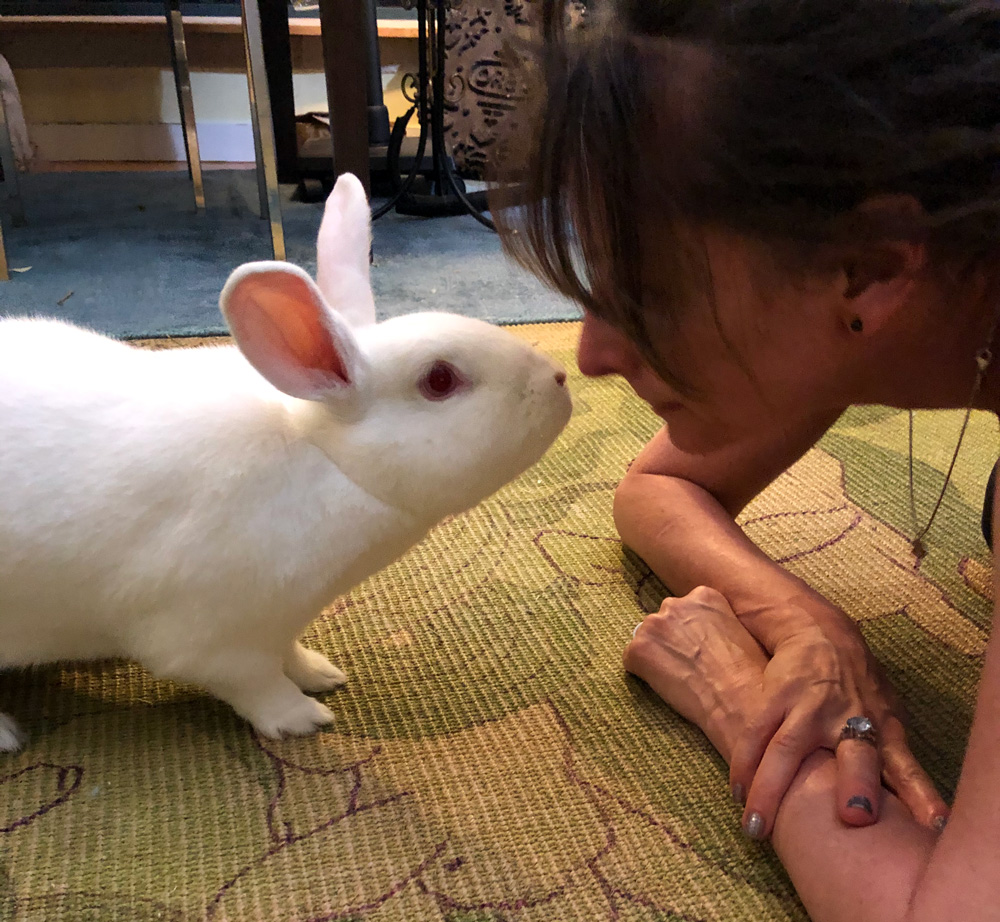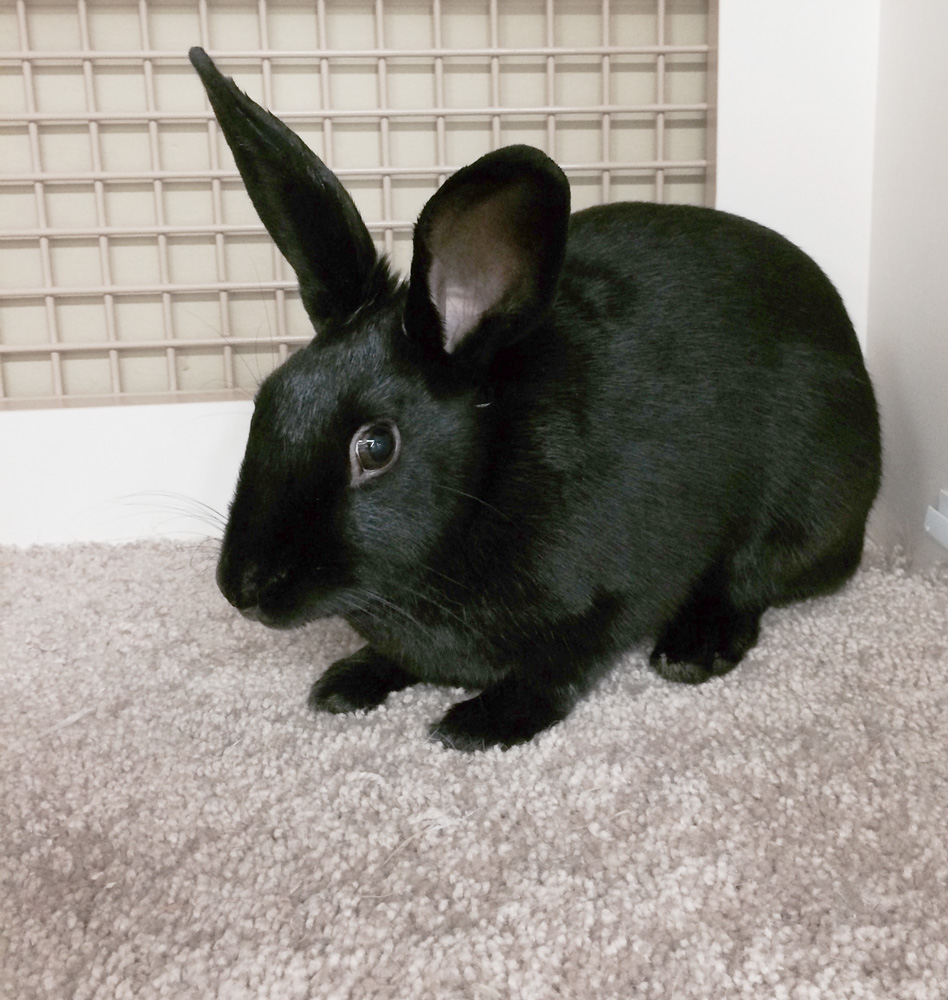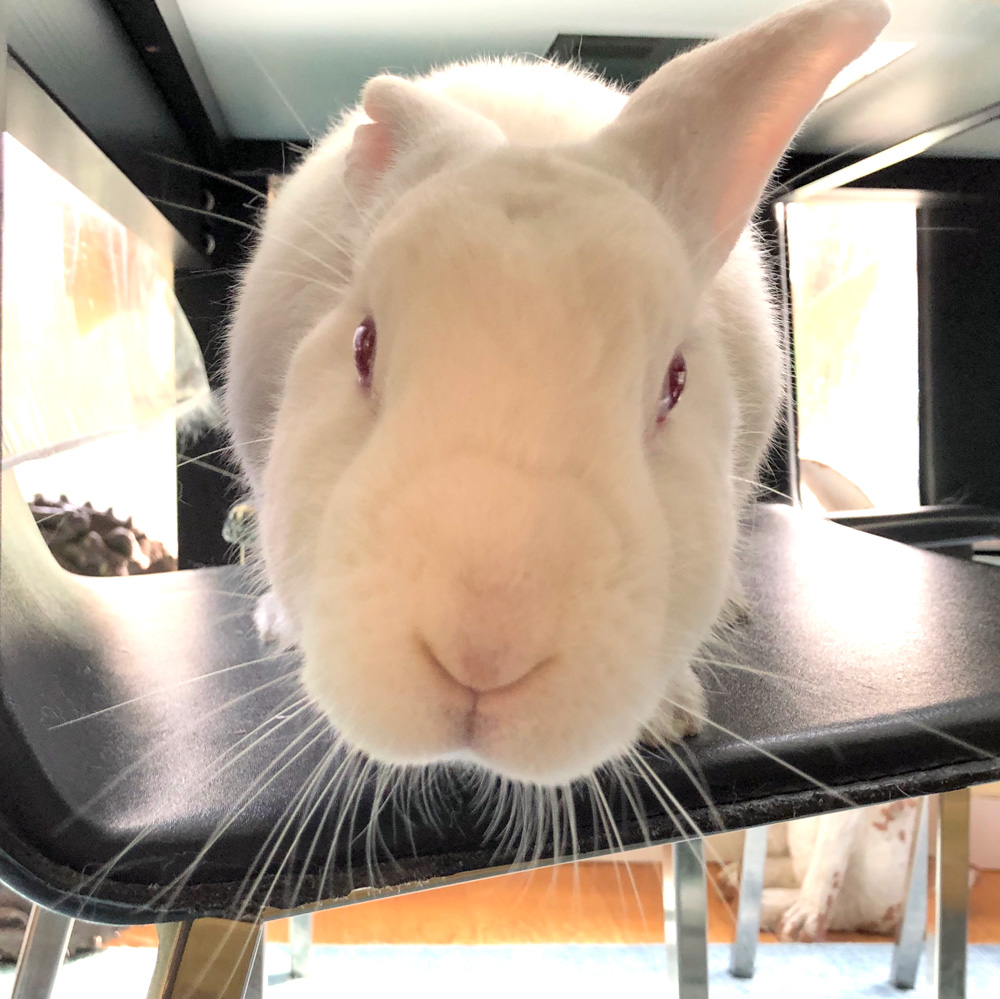
Years ago, I helped a woman adopt a rabbit after her previous one passed away. She fell in love with a beautiful silvery lop named Sheldon, and delightedly took him home. A few weeks later, she gave me a call. She was concerned because she and Sheldon weren’t “connecting”. In fact, he was avoiding her.
I asked what happened when she got close to Sheldon. She said she’d pick him up and cuddle him, but he would get away as quickly as he could. “Have you tried not picking him up?” I asked. Though I tried my best to work with this well-meaning bunny mom, in the end I failed. She became convinced that Sheldon was somehow defective and he was returned. On the brighter side, Sheldon went on to find a happy home.
How to Tell if Your Rabbit Trusts You
Animal training experts Steve Martin and Susan Friedman wrote a great article that explains exactly how to tell if an animal trusts you. The litmus test? They try to initiate interactions with you a lot. Barring any health issues, if they don’t actively seek out your attention and engagement, there’s probably a trust deficit in your relationship. If your rabbit avoids you outright, you’ve definitely got some work to do.
“Trusting animals use their behavior to confidently approach, rather than escape, opportunities to interact with people.”
— Steve Martin and S.G Friedman
Nature and Nurture
 Now that you know how to gauge bunny trust, what can you do if your long-eared lad or lass doesn’t trust you? Don’t despair! And don’t take it personally. Maybe you could have done some things better but It’s not all about you. Rabbits, like people, have different personalities, as anyone who has ever lived with more than one can tell you. Your friend may be slow to trust for a variety of reasons.
Now that you know how to gauge bunny trust, what can you do if your long-eared lad or lass doesn’t trust you? Don’t despair! And don’t take it personally. Maybe you could have done some things better but It’s not all about you. Rabbits, like people, have different personalities, as anyone who has ever lived with more than one can tell you. Your friend may be slow to trust for a variety of reasons.
With rescue animals, we often don’t know what’s happened to them in the past. Many people explain animals’ fear by theorizing that they had a traumatic experience or a bad relationship that made them that way. While that’s certainly possible, it’s not necessarily the case. Ever known someone who was nervous or high strung in general? There are some creatures who are just born more cautious than others. In prey animals, like rabbits, skittishness can even be an evolutionary advantage.
That being said, neither your bunny’s past experiences nor their intrinsic personality should deter you from working on trust. It’s generally possible to increase their level of trust if you know how. Even if you have a good trust relationship with your pet, knowing how trust works and making a conscious effort to strengthen it is always a good investment of your time.
The Trust Account

Martin and Friedman like to use the analogy of a bank account. Every good experience your bun has with you puts a deposit in your account. If you have a lot saved up, it’s OK if you occasionally mess up and do something he doesn’t like. That trust investment cushion ensures he’ll still give you another chance. But too many bad experiences will bankrupt you, and you’ll lose his trust.
It’s very much like what I learned from a self-help book on marriage. The rule of thumb it suggested for a happy marriage is a 5 to 1 ratio of good experiences to bad ones. In your trust account, think of every good interaction as a $1 deposit. Every bad one is a $5 withdrawal. You can see how important it is to keep your balance high. Just a few withdrawals can empty out your account!
For every time I complain about some nit-picky nuance of, say, how my husband has made the bed, I’ve got to balance out with a really nice compliment, a yummy home-cooked meal, helping with the dishes twice and one great big hug. Fortunately, he does the same for me. This advice has seen us through eleven years of marital bliss.
Your relationship with your rabbit probably works the same way.
How to Gain Trust
If you do have a trust deficit, the fix is simple. Start investing in your account and avoid spending it. I know you want to touch Thumper’s belly, I know you want to pick him up and snuggle him: Don’t. Those are withdrawals.
Instead, approach him just close enough that he doesn’t get nervous and no closer. His body language should still be relaxed. Toss a fragrant, tasty treat within his reach and immediately retreat. Do this 5 times in a row. Then come back in an hour and do it again. Repeat this enough times over several days (without overfeeding sweet treats!) and you will probably start to notice Thumper looking happy to see you, or even starting to move closer to you. Human approaching starts to mean good things are about to happen.

As mentioned earlier every bun is unique. You’ll have to adjust your expectations to his individual pace and comfort level. Observe very carefully and note even small changes in body language as you go. I recommend taking video each time and watching it so you can notice more subtle differences. When progress is slow, it helps to be able to compare how things are today versus how they were a week ago or longer.
Over time you should be able to work your way up to things like sitting close by to feed the treats. Eventually you can try touching safe areas – the top of his head, for example, just lightly, and then treating, etc. working your way up to petting, and so on.
Don’t be disappointed if your rabbit never wants to be picked up. That’s true of most bunnies. Being in the grasp of another, larger creature is understandably terrifying for an animal who’s on the menu for so many carnivores! But that’s OK. Time spent together on the floor can be just as satisfying — even more so, when you consider that your small, whisker-nosed friend is making the conscious choice to be with you, not being forced to.
I had a bonded pair once. Frank and Sammy. I adopted Frank because he was such an adorable love bug, and Sammy because it was a package deal. Sammy was not Mr. Congeniality. Nine times out of ten, if you reached over to pet Sammy, he’d whip around and hop away, kicking the dust back at you as he went. But let me tell you, the tenth time, when he stayed there, nestled down, and closed his eyes… it was almost magical. I wish I had known then what I know now about using positive reinforcement to gain trust. Maybe I could have turned that one out of ten into five.
 The Fuzzy Tail of This Blog Post
The Fuzzy Tail of This Blog Post
Who do you trust? Ask yourself why you trust them. I bet your answer has to do with all the times that person came through for you in the past and how rarely they’ve disappointed you. For a vulnerable house rabbit, it can be hard to make that leap of faith. But trust is like a seedling that can grow and blossom if you cultivate it. Any relationship will benefit from a well-padded trust account!
Syl says:
Another interesting look into the lives and thoughts of a rabbit!
It seems to me that dogs and cats can make sounds that express themselves but rabbits are mostly mute, so it’s the
body language that speaks for them.
Melinda says:
Yes, that’s true! You do have to be more observant with rabbits. With dogs and cats you can probably get pretty good at reading their body language too, if you put your mind to it. Lili Chin illustrated a beautiful book about dog body language that might make a great reference for people who want to learn. https://www.doggielanguagebook.com/